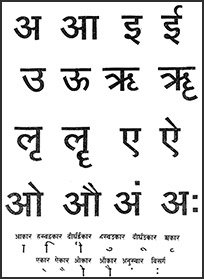Vakyaparisamapti, Vākyaparisamāpti, Vakya-parisamapti: 2 definitions
Introduction:
Vakyaparisamapti means something in Hinduism, Sanskrit. If you want to know the exact meaning, history, etymology or English translation of this term then check out the descriptions on this page. Add your comment or reference to a book if you want to contribute to this summary article.
In Hinduism
Vyakarana (Sanskrit grammar)
Source: Wikisource: A dictionary of Sanskrit grammarVākyaparisamāpti (वाक्यपरिसमाप्ति).—Completion of the idea to be expressed in a sentence or in a group of sentences by the wording actually given, leaving nothing to be understood as contrasted with वाक्यापरिसमाप्ति (vākyāparisamāpti) used in the Mahabhasya; cf. वाक्यापरिसमाप्तेर्वा (vākyāparisamāptervā) P.I.1.10 vart. 4 and the Mahabhasya thereon. There are two ways in which such a completion takes place,singly and collectively; cf. प्रत्येकं वाक्यपरिसमाप्तिः (pratyekaṃ vākyaparisamāptiḥ) illustrated by the usual example देवदत्तयज्ञदत्तविष्णु-मित्रा भोज्यन्ताम् (devadattayajñadattaviṣṇu-mitrā bhojyantām) where Patanjali remarks प्रत्येकं (pratyekaṃ) (प्रत्यवयवं (pratyavayavaṃ)) भुजिः परिसमाप्यते (bhujiḥ parisamāpyate); cf. also समुदाये वाक्यपरिसमाप्तिः (samudāye vākyaparisamāptiḥ) where Patajali remarks गर्गाः शतं दण्ड्यन्ताम् । अर्थिनश्च राजानो हिरण्येन भवन्ति न च प्रत्येकं दण्डयन्ति । (gargāḥ śataṃ daṇḍyantām | arthinaśca rājāno hiraṇyena bhavanti na ca pratyekaṃ daṇḍayanti |) M. Bh.on P.I.1.1Vart.12; cf. also M.Bh. on P.I.1.7, I.2.39, II.2.l etc.

Vyakarana (व्याकरण, vyākaraṇa) refers to Sanskrit grammar and represents one of the six additional sciences (vedanga) to be studied along with the Vedas. Vyakarana concerns itself with the rules of Sanskrit grammar and linguistic analysis in order to establish the correct context of words and sentences.
Languages of India and abroad
Sanskrit dictionary
Source: DDSA: The practical Sanskrit-English dictionaryVākyaparisamāpti (वाक्यपरिसमाप्ति).—f. Completion of a sentence (i. e. the application of the sense expressed by a sentence). This occurs in two ways; (i) the sense of the sentence as a whole may be predicated of the things or persons mentioned in the उद्देशपद (uddeśapada) severally; or (ii) it may be predicated of them all combined together. The former is known as प्रत्येकं वाक्यपरिसमाप्तिः (pratyekaṃ vākyaparisamāptiḥ) and is illustrated by देवदत्तयज्ञदत्तविष्णुमित्रा भोज्यन्ताम् (devadattayajñadattaviṣṇumitrā bhojyantām); while the latter is known as समुदाये वाक्यपरिसमाप्तिः (samudāye vākyaparisamāptiḥ) and illustrated by गर्गाः शतं दण्ड्यन्ताम् (gargāḥ śataṃ daṇḍyantām); see ŚB. on MS.3.1.12.
Derivable forms: vākyaparisamāptiḥ (वाक्यपरिसमाप्तिः).
Vākyaparisamāpti is a Sanskrit compound consisting of the terms vākya and parisamāpti (परिसमाप्ति).
Sanskrit, also spelled संस्कृतम् (saṃskṛtam), is an ancient language of India commonly seen as the grandmother of the Indo-European language family (even English!). Closely allied with Prakrit and Pali, Sanskrit is more exhaustive in both grammar and terms and has the most extensive collection of literature in the world, greatly surpassing its sister-languages Greek and Latin.
See also (Relevant definitions)
Partial matches: Vakya, Parisamapti.
Full-text: Parisamapti, Drishtanta, Samudaya, Anushanga.
Relevant text
No search results for Vakyaparisamapti, Vākyaparisamāpti, Vakya-parisamapti, Vākya-parisamāpti; (plurals include: Vakyaparisamaptis, Vākyaparisamāptis, parisamaptis, parisamāptis) in any book or story.